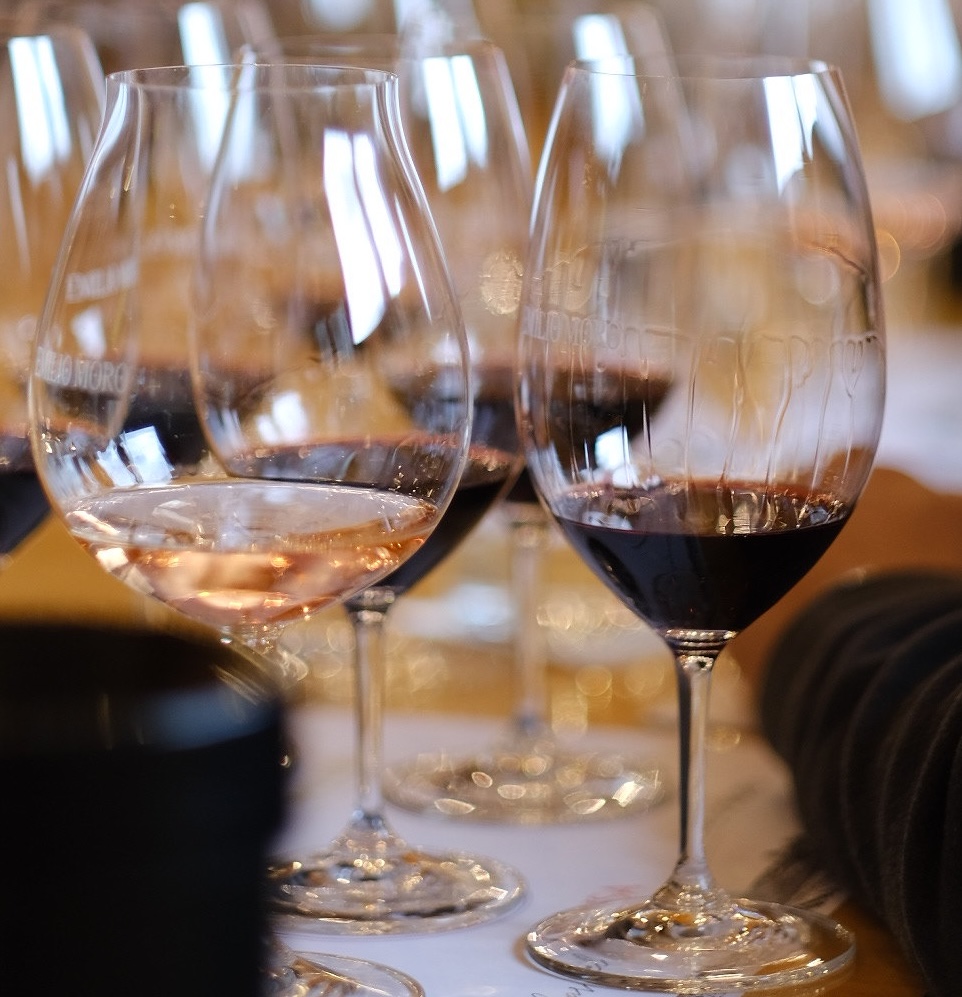Two DOs, One River, Infinite Personality
Ribera del Duero and Rueda sit on Spain’s meseta—an elevated plateau where days are sun-blazed, nights turn crisp, rainfall is a rumor, and vines earn every berry. The Duero River threads these regions north (Ribera) and south (Rueda), carving terraces, cooling vineyards, and anchoring a culture where castles, pilgrims, and wine have intertwined for more than two millennia. In Rueda, harvest often happens at night to lock in aroma and acidity; in Ribera, old vines and dramatic diurnal swings deliver intensity with poise. It’s no accident that Verdejo is Spain’s top-selling white and Ribera’s Tempranillo ranks among the nation’s most coveted reds.
Rueda (White): Verdejo’s Many Lives
If Sauvignon Blanc and Chablis had a brilliant Spanish cousin, she’d be Verdejo—sharp-minded, textural, and effortlessly food-savvy. In its youth (joven), Verdejo is citrus-bright and herb-scented; with lees aging, it gains cream and glide; with careful oak rest, it adds breadth without losing its steel. Top examples can spar with Loire whites on complexity and age. This shape-shifting is why Rueda wins by-the-glass lists and tasting menus: one grape, multiple gears.
Terroir is the quiet engine of that range. Gravel near the river builds structure; limestone and gypsum can add line and lift; clay and pockets of sand (which protected rare pre-phylloxera parcels) bring texture and a whisper of spice. Despite explosive growth since Rueda’s 1980 DO status, many of the most captivating bottlings still come from older plots, often hand-picked—proof that place and plant age still matter most.
For the trade: Rueda labeling is your roadmap. “Rueda” requires ≥50% Verdejo; “Rueda Verdejo” typically means 85–100% Verdejo. Stock a flight: joven for aperitivo service, sobre lías (lees-aged) for mid-course seafood and salads, and a selective oak-rested cuvée for richer mains. This single-variety arc keeps menus tight and education crisp.
Pairing that sells: Think herb-laced cuisine—grilled sardines with lemon and parsley, seafood paella, mussels escabeche, or pasta with tomato and fennel. Verdejo’s citrus, anise, and gentle phenolics cut through brine and oil, then knit back into the dish on the finish. Build a “Verdejo three-ways” by-the-glass board and watch covers say “sí.”
Ribera del Duero (Red): Tempranillo With a Spine of Stone
Ribera’s Tinto Fino (Tempranillo) ripens at altitude, yielding small, thick-skinned berries packed with color, tannin, and nerve. That high-plateau cadence—hot days, cold nights—preserves acidity, so even the most opulent styles finish clean. It’s why sommeliers can pour Ribera alongside smoky lamb one night and wood-grilled mushrooms the next without palate fatigue.
There’s history in the glass, too. Roman roots, monastic refinement, and, in modern times, benchmark houses (Vega Sicilia, Dominio de Pingus) that pushed quality upward and prices into collector territory—without abandoning everyday pleasure. From joven and crianza to reserva and gran reserva, the region’s oak regimes sculpt tannin and texture rather than mask fruit. Blending with Cabernet, Merlot, Garnacha, or Malbec is permitted (Tempranillo remains the star), offering stylistic nuance while protecting identity.
For the trade: If your BTG lineup already leans Rioja, add Ribera, don’t replace. Side-by-side flights help guests experience Tempranillo’s spectrum—Rioja’s silky tradition next to Ribera’s mineral-backed power. Even at entry tiers, Ribera shows serious mid-palate weight, and premium cuvées compete with the world’s blue-chips. That “Tempranillo two-ways” program turns curiosity into check average.
Pairing that delights: Roast lamb with rosemary and olive oil (classic), hearth-charred chuletón, BBQ pork with smoked paprika, or a truffled mushroom tortilla. Tempranillo’s dark fruit and savory spice lock onto umami and char; lively acidity keeps the finish vertical. For summer, try lightly chilled joven with smash burgers—the tannin tames fat; the fruit keeps it fun.
Culture, Castles, and the Capital’s Palate
Castilla y León is a living museum—300+ medieval castles, pilgrimage routes, Roman mosaics—and wine has hydrated that history since antiquity. In today’s Madrid, that legacy meets modern hospitality: a by-the-glass Verdejo to start, a half-bottle of Ribera with shared plates, and a nightcap on a terrace while the city hums. The result? Wines that feel simultaneously ancient and new—exactly the energy a global capital craves.
Media and chefs have noticed. From long-form reports on Rueda’s terroir diversity and old vines to kudos for Verdejo as one of the “absolute best wines for food,” coverage keeps pushing these regions from insider favorites to headliners. For retailers and restaurants, that third-party validation makes staff trainings easier and hand-sells faster.
How Madrid Made It Obvious (and How You Can, Too)
Why they pour it: Consistency at fair prices, terroir you can taste, and styles that flex across menus—from oysters to oxtails. That’s a buyer’s dream and a guest’s delight.
How to program it (playbook):
- Rueda Flight (3 x 3 oz): Joven → Sobre Lías → Oak-Rested. Add a simple card explaining lees and texture.
- Ribera Ladder (by the glass): Joven or Crianza → Reserva → Gran Reserva (half-bottle or Coravin). Use “Lions & Castles” storytelling: lioness for Verdejo’s grace; castle for Tempranillo’s structure.
- Seasonality: Winter whites are in; summer reds can chill. Lean into that counter-intuitive magic in staff scripts and menu copy.
For tourism partners: The Ribera y Rueda wine routes turn tastings into trips—and trips into loyal customers who ask for your labels back home. Use castles, night harvests, and old-vine parcels as marquee visuals.
The Takeaway
In Madrid, the “house red” and “house white” are often a philosophy: Tempranillo with architecture, Verdejo with velocity. Pour them side by side and you don’t just taste Spain—you taste how Spain eats, gathers, and celebrates.
Ribera del Duero and Rueda aren’t simply well-made; they’re well-lived. That’s why they’re everywhere in the capital—and why they deserve to be everywhere on your list.
